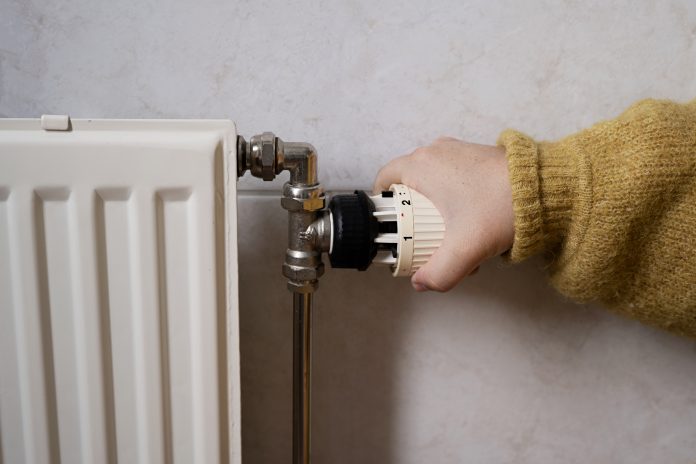New research by the Building Research Establishment (BRE) has found that tackling cold homes in England could be costing the NHS £540m a year in preventable costs
BRE’s new report, titled ‘The Cost of Poor Housing by tenure in England’, follows its 2021 analysis on the overall cost of substandard housing to the NHS. The new research provides a breakdown of the impact of poor housing on the NHS from private to socially rented sectors.
Poorly insulated properties increase the risk of ill health
Currently, 700,000 out of the 2.4m homes in England are officially assessed as excessivley cold, meaning that millions of people across the country could be at risk of ill health as a result of poorly insulated and inadequately heated properties.
Excess cold is most prevalent among properties that are owner occupied or privately rented homes, which are more likely to have the lowest energy efficiency ratings (a band F or G). Over half a million owner occupied properties and 200,000 privately rented homes fall into this category.
Socially rented homes are at lower risk of excess cold
On the other hand, the study found that a comparativley small number (20,000) of socially rented homes are excessivley cold, due to the long-standing Decent Homes Standard regulations in the social housing sector.
The NHS bill to treat people impacted by excess cold of £540m per year could be mitigated if action was taken to improve the efficiency and quality of England’s housing stock, with a payback of between 8 and 9 years.
Poorly insulated homes not only have an impact on people’s health, but are a barrier to net zero ambitions
Gillian Charlesworth, CEO, BRE, commented: “Today’s analysis reminds us just how much of an impact poorly insulated and inadequately heated homes are having on residents and our public services, particularly in the poorest quality properties.
“Poorly insulated homes have an immediate impact on the health of the people who live in them, as well as being expensive to heat and a barrier to meeting our net zero ambitions. When local and national government know where the most problematic homes are from data like these, they can design targeted programmes to improve them.
“But these results are the tip of the iceberg. These are only the direct costs to the NHS of treating health problems from the very least energy efficient homes. With the current energy price crisis, families living in a much wider group of homes will be struggling to heat their homes this winter and so even more people are likely to face health problems as a result.
“This leaves them unable to work, and potentially having to remain in hospital for a long time if their home isn’t safe to return to, meaning that the impact on the wider economy is even greater.”
£5.3bn is needed to tackle cold in homes
To mitigate the impact of excess cold in homes through cost-effective solutions such as insulation and heating system improvements, it would cost an estimated total of £5.3bn.
When this sum is broken down by tenure, BRE estimates that it would cost on average £6,690 to remedy excess cold for an owner-occupied property and £6,835 per property in the private rented sector.
The Minimum Energy Efficiency Standards policy is in place to ensure that it is a requirement to improve excessivley cold private rented properties. However, landlords only need to spend a maximum of £3,500 including VAT to improve their property towards the required minimum EPC “E” target.
New research from BRE suggests that this total is only sufficient enough to bring 30-40% of excessively cold private rented homes to an “E” standard.
As individuals and families grapple with the cost of living crisis, these prices will be out of reach for many, and owner occupier households and private landlords may need targeted government support to be able to rectify hazards in their properties.
Strategic retrofit programmes are critical to improving the energy efficiency and safety of a property
Gillian Charlesworth added: “It’s clear from our research that there are major benefits to be reaped from improving the efficiency of England’s homes, particularly as households are set to lose government support with record energy prices from April and public services face significant pressure. However, while progress is being made in this area with new funding being allocated to home insulation, we still have a long way to go.
“Strategic retrofit programmes are critical to improving the energy efficiency and safety of a property. We need to see a continued and targeted effort to improve England’s poorest homes, for the benefit of individuals, society and our public infrastructure.”
Actis says the report highlights the importance of ensuring homes are properly insulated
Insulation specialist Actis says that the report highlights the importance of ensuring homes are properly insulated and agrees with its call for a strategic retrofit programme to be put in place to help improve the country’s worst-performing homes.
Actis says the report hammers home the fact that retrofitting homes to improve their energy efficiency is more than a ‘nice to have’. As well as saving a fortune on heating bills and helping the environment, living in a warm home can stave off cold-related illnesses as well as falls, and poor cognitive functioning.
Actis UK and Ireland sales director Mark Cooper said: “The BRE report estimates it will cost more than £6,000 per home on average to improve the most excessively cold properties. Although the Minimum Level of Energy Efficiency (MEES) for private rented properties, which require a minimum E energy efficiency rating, might only cost landlords £3,500 per home.
“The new £1 billion ECO+ scheme, which comes into force this spring, is targeted at home owners living in certain types of homes – in council tax bands A to D in England, A to E in Scotland and A to C in Wales – and which have EPC (Energy Performance Certificate) ratings of D or lower.
“While this is helpful, home owners are only being offered grants of up to £1,500 – a long way short of the cost the BRE says is required.
“Research shows that more than 12 million homes had EPCs of D or worse in 2020. In fact, we have some of the least energy efficient housing stock in Europe. Installing insulation is the most cost-effective way of stemming the flow of heat escaping from these homes.
“This latest research is yet another important piece of evidence showing that something radical needs to be done to ensure the leaky housing stock with which the UK is blessed is fit for purpose. This is important for the purses of those living there, for the planet, for the health of the nation and now, as this report shows, for the economy.”
BRE will be publishing a 30-year cost benefit analysis on the cost of all poor housing to the NHS and wider society later this year.

















